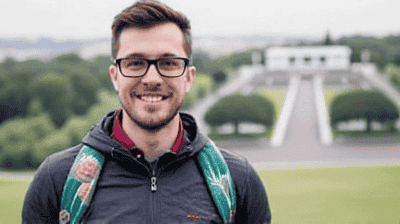
In a fast-paced world dominated by instant gratification and rapid movement, a counter-culture is emerging within the travel industry: slow travel. This philosophy invites travelers to embrace a more deliberate, meaningful approach to exploration, emphasizing quality over quantity, and fostering deeper connections with people, cultures, and the environment. As awareness of the environmental impact of travel grows, the slow travel movement offers an opportunity to reduce our footprints while enriching our travel experiences.
Slow travel is a mindset and approach to travel that encourages travelers to take their time, prioritize sustainability, and engage more fully with their surroundings. Rather than rushing from one destination to another, slow travelers focus on immersing themselves in a place, its culture, and its people. The goal is to cultivate a deeper understanding and appreciation of the destinations visited, leading to a more fulfilling and responsible travel experience.
Slow travel is built on several core principles, including:
Quality over Quantity: Slow travelers often choose to explore fewer destinations more thoroughly, allowing for a more meaningful experience with each place visited.
Local Engagement: The philosophy promotes interacting with local communities, supporting small businesses, and participating in cultural exchanges that benefit both travelers and hosts.
Mindfulness: Slow travel encourages mindfulness and reflection, fostering a greater awareness of the traveler’s impact on the environment and local cultures.
Sustainability: A commitment to minimizing environmental footprints and promoting sustainable practices is central to slow travel, making choices that benefit ecosystems and communities.
Simplicity: Slow travelers often embrace simplicity in their travel choices, opting for less materialism and focusing on experiences rather than possessions.

Practicing slow travel offers numerous benefits for individuals, communities, and the planet:
One of the most significant advantages of slow travel is its potential to reduce environmental impacts. By prioritizing local experiences, choosing less carbon-intensive transportation options, and supporting sustainable practices, slow travelers can minimize their footprints.
Reduced Transportation Emissions: Slow travel encourages travelers to use trains, buses, bikes, or their own two feet for transportation, lowering their carbon emissions in the process.
Decreased Resource Consumption: By staying longer in one place, travelers can reduce overall energy and resource consumption associated with frequent check-ins at hotels and constant movement.
Slow travel fosters authentic connections with local communities, promoting cultural exchange and helping to preserve traditions:
Supporting Local Economies: Slow travelers often choose locally-owned accommodations, restaurants, and shops, ensuring that their travel dollars contribute to the local economy.
Enhanced Cultural Understanding: Longer stays allow travelers to engage deeply with the local culture, leading to meaningful interactions and a greater appreciation of cultural heritage.
Traveling slowly can lead to greater personal fulfillment and deeper satisfaction:
Mindfulness and Reflection: Slow travel encourages introspection and mindfulness, allowing travelers to appreciate each moment, savor experiences, and foster a sense of peace.
Building Connections: Investing time in a destination allows for meaningful relationships to develop, whether with locals or fellow travelers, enriching the overall experience.
Traveling slowly can even have positive impacts on physical and mental health:
Reducing Stress: A slower pace can help alleviate the stress often associated with travel, allowing individuals to truly unwind and relax.
Encouraging Physical Activity: Opting for walking or cycling as primary modes of transport promotes physical activity and overall well-being.
If you’re interested in adopting a slow travel approach, here are some practical tips to guide your journey:
Selecting destinations that align with your slow travel goals is critical. Look for:
Off-the-Beaten-Path Locations: Consider exploring lesser-known areas rather than popular tourist traps. Smaller towns and rural areas often provide rich cultural experiences without the crowds.
Natural Environments: Opt for destinations that promote outdoor activities, allowing for exploration of nature and opportunities to engage with local ecosystems.
Instead of cramming multiple destinations into a single trip, consider:
Extended Stays: Book accommodations for a week or more in a single location, allowing you to explore the area more thoroughly and engage with the local community.
Minimal Moving: Limit the number of locations visited during your trip to reduce logistical stresses and environmental impacts.
Transportation choices play a crucial role in reducing your travel footprint:
Train and Bus Travel: Utilize public transportation systems instead of flying or driving long distances. Trains and buses often have a lower carbon footprint and facilitate local interactions.
Walking and Cycling: Embrace personal modes of transportation like walking or biking to explore your destination. This method allows for a more intimate connection to the area.
Fostering connections with local cultures can enhance your experience:
Stay in Locally-Owned Accommodations: Opt for guesthouses, bed-and-breakfasts, or homestays that are run by residents, ensuring your stay directly benefits the community.
Participate in Cultural Experiences: Try cooking classes, craft workshops, or guided tours led by locals to gain insight into their way of life and support artisans and cultural heritage.
Seek out meaningful and enriching experiences:
Visit Markets and Festivals: Engage with the local culture by attending markets, fairs, or festivals where you can witness traditions and customs in action.
Explore Natural Wonders: Participate in outdoor activities that connect you with nature, such as hiking, birdwatching, or wildlife volunteer programs focused on conservation.
Cultivating mindfulness can enhance your slow travel experience:
Limit Digital Distractions: Take breaks from technology and social media to focus on the present, allowing for deeper connections with your surroundings.
Journaling: Consider keeping a travel journal to document your thoughts, feelings, and experiences. This practice can foster reflection and mindfulness throughout your journey.
Seek out businesses and organizations that align with sustainable practices:
Eco-friendly Accommodations: Choose lodging that employs green practices, such as solar energy, water conservation, and waste reduction measures.
Responsible Tour Operators: Work with tour operators that prioritize sustainable tourism, community engagement, and environmental stewardship.

The rise of slow travel is part of a broader movement toward sustainable tourism, which seeks to minimize negative environmental and social impacts while enhancing positive outcomes. Here are some trends and developments that support this transition:
Travelers are becoming more aware of their choices and their potential impacts on the environment and communities. Some factors contributing to this awareness include:
Documentaries and Media: Films and documentaries that focus on environmental issues and cultural challenges have sparked conversations about responsible travel.
Social Media Influence: Influencers and travelers are sharing sustainable travel tips and experiences, which help raise awareness and promote slower, more intentional travel choices.
Policies and programs aimed at promoting sustainable tourism are gaining traction:
Regulations and Certifications: Governments and organizations are implementing tourism regulations that promote environmental protections and support local economies.
Sustainable Tourism Certifications: Certifications such as Green Key, EarthCheck, and Travelife provide travelers with information on eco-friendly accommodations and activities.
Communities are increasingly taking charge of tourism development:
Community-Based Tourism (CBT): This approach empowers local communities to develop and manage tourism initiatives that meet their needs while preserving cultural heritage and the environment.
Empowerment through Ownership: Involving local residents in tourism planning gives them a voice in shaping their environment, leading to more sustainable practices and equitable economic opportunities.
Technology can enhance the slow travel experience while promoting sustainability:
Apps and Platforms: Various apps and websites provide information on local experiences, sustainable travel options, and eco-friendly accommodations.
Virtual Tours and Experiences: Technology enables travelers to explore destinations through virtual experiences, reducing travel demand and conserving resources.
The rise of slow travel represents a profound shift in how we approach exploration and adventure. By prioritizing responsible tourism, emphasizing meaningful connections, and reducing environmental footprints, travelers can contribute to a more sustainable future. Embracing the slow travel mindset not only enriches our experiences but also fosters a collective sense of responsibility toward the planet and its diverse cultures. As we forge deeper ties with the places we visit, we enhance our preservation efforts while creating lasting memories.
By choosing to travel slowly, we journey not just across landscapes but into the heart of the world, discovering both its beauty and its fragility. In doing so, we pave the way for a sustainable travel movement that honors our planet and its people, ensuring that future generations can continue to explore the wonders of the earth.